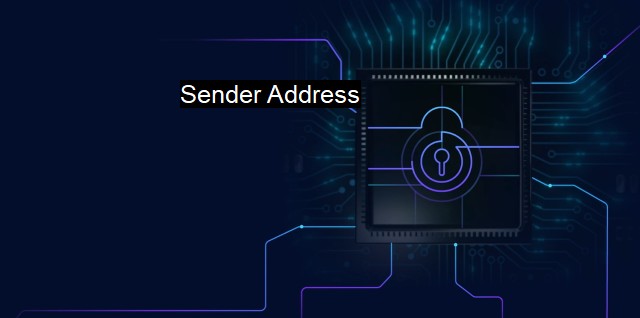What are Sender Address?
Unlocking the Importance of Sender Address in Cybersecurity and Antivirus: Protecting Against Email Spoofing and Fraudulent Activity
In the realm of cyber security and antivirus, a sender address plays an integral role in communication, especially in email communication. The term 'sender address' generally refers to the unique sequence of characters that identifies the sender in an email dialogue. This address is essential in sending, receiving, routing and delivering email messages in a safe and secure manner.In cybersecurity and antivirus frameworks, understanding the concept, usage, and mechanism of sender addresses becomes crucially important. The sender address is the digital signature of an identifiable entity from which an email has originated. It ensures that whenever a user interacts in a virtual environment, it is possible to trace the origin of the communication. This factor not only boosts the user's confidence in communicating but also adds a layer of transparency and traceability, integral to ensuring good cybersecurity practices.
Every email sent over the internet has two types of sender address, namely – 'Envelope Sender' (also known as 'Return Path') and 'Header Sender'.
The envelope sender address is used during the transport of the message, such as when the email is being routed from the sender's email server to the receiver's. It is also this address to which automatic error messages and delivery status notifications will be sent if there are any issues in email delivery.
On the other hand, the header sender address is contained within the email itself and can be viewed by email recipients. It's this address that the recipients see in the 'From' field of the emails they receive. The header sender address is often what recipients use to judge if an email is legitimate or a cyber threat, which is why cybercriminals often forge this address in phishing attacks.
A vital part of cybersecurity and antivirus solutions, especially in the field of email security, centers on sender addresses. A classic yet widely used form of cyber threat is 'email spoofing,' where the attacker sends an email whose header sender address is forged to appear as if it's coming from someone else, often someone known and trusted by the recipient.
Effective antivirus solutions promptly scan the sender's address, comparing it against known threats or unusual patterns. By charting the filtering rules for sender addresses and auditing them frequently, potential cyber threats can be isolated, monitored, and exterminated.
Cybersecurity measures like Sender Policy Framework (SPF), DKIM (DomainKeys Identified Mail), and DMARC (Domain-based Message Authentication, Reporting, and Conformance) revolve around the authentication of the sender's address. These technologies enable the receiver email server to verify if the incoming email originates from a server authorized by the domain mentioned in the email. By doing so, they help detect any forgery in the sender's address, and thus have become essential protocols in the global fight against email spoofing and phishing.
Antivirus solutions also keep malwares at bay by carefully analyzing the sender address for suspicious and spammy behavior. They employ a series of spam-filtering algorithms, predictive AI, and machine learning models that quickly ascertain the legitimacy of orange flags attached to the sender addresses.
While the sender’s address is just a small component of an email, it has had a big impact on cybersecurity. Faking sender addresses is a common way for hackers to trick users but with advanced antivirus and email security solutions, it is much easier to stay safe online. The key to avoid risks and bolster security shields lies in understanding the crux of components such as the sender address and integrating thorough safeguards in one's digital regime.

Sender Address FAQs
What is a sender address and why is it important in cybersecurity?
A sender address is the email address that appears in the "From" field of an email message. It is important in cybersecurity because it helps to identify the origin of an email and verify its authenticity.Can a sender address be spoofed, and if so, what are the risks?
Yes, a sender address can be easily spoofed, which means that a cybercriminal can create a fake email address that appears to be from a legitimate source. The risks of email spoofing include phishing scams, malware distribution, and identity theft.How can I verify the authenticity of a sender address?
You can verify the authenticity of a sender address by checking the domain name in the email address. If the domain name matches the company or organization that the email claims to be from, it is likely to be authentic. You can also hover over the sender's email address to see if it matches the name that appears in the "From" field.What are some best practices for protecting my sender address from cyber threats?
Some best practices for protecting your sender address from cyber threats include using strong passwords, enabling two-factor authentication, and regularly updating your antivirus software. You should also avoid clicking on suspicious links or downloading attachments from unknown senders, and be cautious when entering your email address on unfamiliar websites.| | A | | | B | | | C | | | D | | | E | | | F | | | G | | | H | | | I | | | J | | | K | | | L | | | M | |
| | N | | | O | | | P | | | Q | | | R | | | S | | | T | | | U | | | V | | | W | | | X | | | Y | | | Z | |
| | 1 | | | 2 | | | 3 | | | 4 | | | 7 | | | 8 | | |||||||